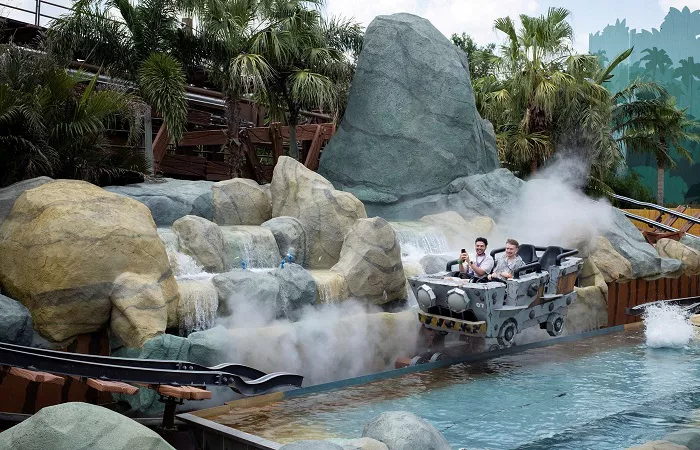Though Disneyland Paris officially opened its gates in 1992, the vision for a European Disney resort began decades earlier. As early as the 1960s, The Walt Disney Company explored potential locations across the continent, including Frankfurt, Paris, London, and Milan. However, the project was shelved in favor of developing Walt Disney World in Florida and the original EPCOT concept.
By the 1980s, buoyed by the success of Walt Disney World and Tokyo Disneyland, the company reignited its European ambitions. From an initial list of 1,200 possible sites, Disney narrowed the selection to four: two in France and two in Spain. Despite Spain’s warmer, subtropical climate being seen as an advantage, the company ultimately chose Marne-la-Vallée, a rural town east of Paris. The location’s proximity to the French capital and its central positioning in Western Europe proved decisive. Disney CEO Michael Eisner signed an agreement with the French government in 1985. But from that point forward, the project encountered significant turbulence.
From its announcement, the development—then known as EuroDisney—faced strong criticism from segments of French society. Many saw the resort as a symbol of American cultural imperialism. French theatre director Ariane Mnouchkine famously dubbed it a “cultural Chernobyl.” Additionally, Disney’s strict workplace policies, which mandated English as the working language and prohibited facial hair, makeup, tattoos, and visible jewelry, clashed with local labor expectations and provoked opposition from French unions.
Despite these early challenges, Disney projected unshakable confidence in the resort’s success. The company launched the park with an extensive infrastructure, including seven themed hotels offering 5,800 rooms and a vibrant entertainment district. Yet, this ambitious build-out would later strain the resort’s finances.
Opening day was marred by a public transportation strike and unconfirmed bomb threats. Ironically, many would-be visitors avoided the park due to fears of overcrowding. As a result, fewer than 25,000 guests attended the inaugural day—well below projections. Attendance remained sluggish in the months that followed, despite the park’s stunning design, widely praised as one of the most beautiful Disney parks ever constructed. Spearheaded by Imagineer Tony Baxter, Disneyland Paris was considered by many as the definitive execution of the classic “castle park” concept.
Persistent low turnout led to severe financial losses. In response, Disney was forced to lay off staff and shutter some of the resort’s hotels. The park’s name was eventually changed from EuroDisney to Disneyland Paris, after market research revealed that the word “Euro” carried negative financial associations for European audiences.
The park’s eventual rebound came largely thanks to the introduction of its version of Space Mountain, which drew strong attendance and helped cement the resort’s status as one of Europe’s top tourist destinations. Nonetheless, the early financial debacle left deep scars within the company.
What had once been envisioned as a cornerstone of Michael Eisner’s ambitious “Disney Decade” became a cautionary tale. Several high-profile projects—such as WestCOT, Disney’s America, and Tomorrowland 2055—were scrapped, while others like Disney’s Animal Kingdom faced significant budget cuts, including the cancellation of the imaginative Beastly Kingdom expansion.
Even in subsequent international ventures, Disney remained cautious. The launches of Hong Kong Disneyland and Shanghai Disneyland were notably more modest in scale compared to the grand ambitions seen in Paris.
EuroDisney’s troubled debut remains one of the most significant setbacks in Disney’s history and continues to shape the company’s global strategy to this day.


